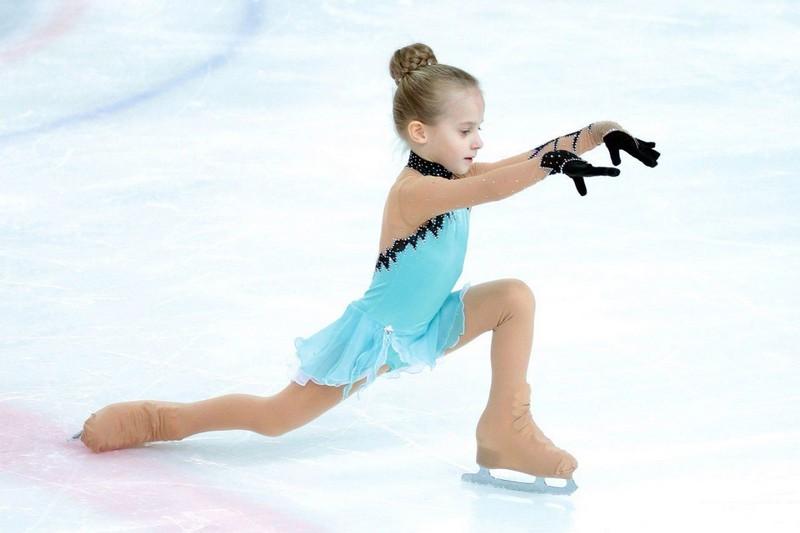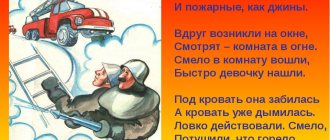Winter sports for children are an opportunity to combine business with pleasure. This includes physical activity, fun time, communication on interests, and hardening.
Many parents are afraid of the temperature conditions in which training takes place, however, cold (if all the rules are followed) has a beneficial effect on all systems and processes occurring in the body. In addition, outdoor winter sports will help improve your child’s health after staying in urban conditions, although most of them are considered extreme and have a high degree of injury.
The top most popular are luge; skiing; snowboarding.
Speaking about indoor sports, the choice for children is hockey; skating; figure skating.
Contraindications for exercise
Before enrolling your child in the coveted figure skating section or placing him under the responsibility of a snowboarding coach, you must consult a doctor. Winter sports cannot be called safe, but if you focus on this, even playing the piano will harm the child - you can even get your fingers pinched by the lid! The list of main contraindications includes:
- Problems related to the musculoskeletal system.
- Disturbances in the development of connective tissue.
- Diseases of the cardiovascular system.
- Respiratory system disorders.
- Kidney diseases.
- Previous injuries (most often head injuries).
Medical examination of children: why, when and how often.
Children's drawings on the theme of winter sports, step by step with photos
Snowboarding
- Draw a snowboard tilted. Draw the contours of the head and legs according to the diagram.
- Since the snowboarder will be shown crouching, draw in the shins.
- Draw the helmet and mask on the head, complete the design of the knees by rounding them.
- Draw the shoulders and arms.
- Complete the drawing with small details.
skiing
- Sketch the athlete in motion using lines.
- Give a more lively image by completing the torso, arms, and legs.
- Add skis and poles.
- Detail the image.
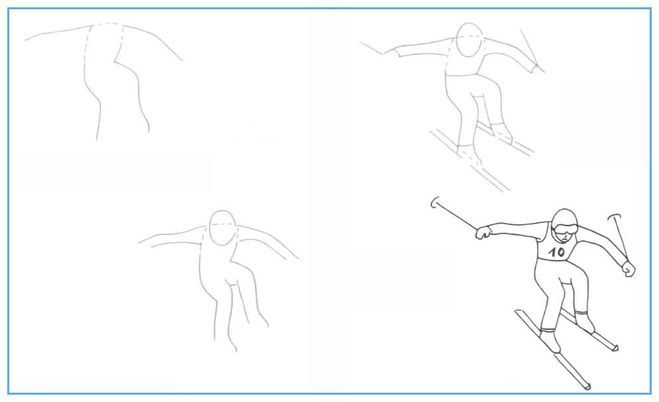
Figure skating
- Sketch the angle formed by the skater's left arm and body.
- Draw another leg and sketch out the head.
- Draw the girl's left arm and the outline of her skirt.
- Add skates, the visible part of the right hand, and draw the head.
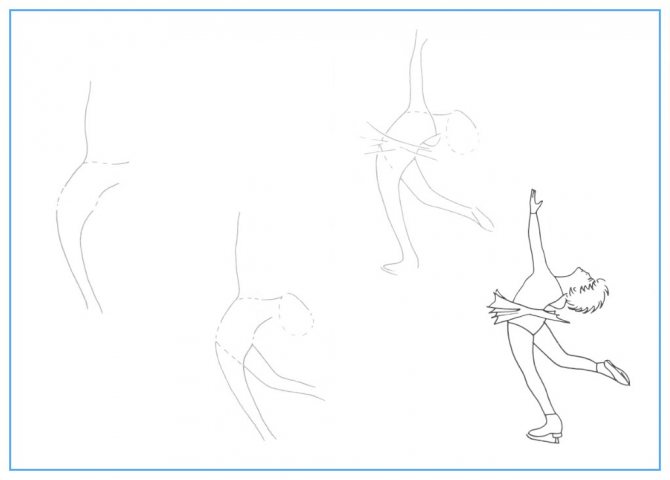
At what age can you engage in winter sports?
Winter sports for children have age restrictions, however, some types can be practiced from the age of four. The difference in indicators is determined by the child’s physical health (development of the musculoskeletal system, stability of the nervous system, etc.) and his readiness from a psychological point of view: the ability to communicate, awareness of possible danger and responsibility for one’s actions.
Of course, a lot depends on the purpose for which you send your child to sports - for the soul or in order to raise a future Olympic champion. You can equip him with a hockey stick and puck as early as 4 years old, but professional training should begin at 9 years old, and then take into account parameters such as weight, muscle mass, endurance and ability to work in a team. By the same principle, you can put a child on skates immediately after he has learned to walk, although it is better to think about serious activities from the age of 6. And, for example, skiing and luge are available for children from 5-6 years of age, snowboarding is possible practice since age 7.
Luge
Each of us remembers how fun it was as a child to sled on snow-covered hills. However, luge is not a joke of entertainment with a group of friends, but quite a serious sport, which has its own subtypes: classic, natural and skeleton. At its core, each of them is a downhill sled run, but with its own characteristics.
Your child will learn to control his own body, which, by the way, will need to be regularly trained: driving a sled is not an easy task.
Before enrolling your child in a section, objectively assess his physical fitness and be prepared that his weight along with equipment and equipment will be taken into account. But this sport is good for both boys and girls from the age of 5, however, for professional activities you will have to postpone the idea until the age of 10.
Luge for children: from what age and what are the benefits.
Summary of educational activities on cognitive development in the senior group on a winter theme
Summary of direct educational activities in the senior group “Winter Sports” (Educational area “Cognition”)
Goal: to introduce children to winter sports, broaden their horizons, and create a desire to engage in some kind of sport themselves. Objectives: 1. Clarify children’s knowledge about winter sports.
2. Ensure that the vocabulary on the topic is enriched and clarified. Arouse interest in physical education and sports. 3. Promote the development of logical thinking and attention; 4. Form ideas about the importance and health benefits of playing sports. 5. Promote the formation of a respectful attitude towards each other. Materials and equipment: laptop, projector, pictures of athletes and pictures with the necessary equipment for the athlete. Progress of activity:
Educator : Guys, how do you understand the proverb? Anyone who plays sports gains strength! (children's answers) Educator: To be healthy you need to play sports, and sports is work. Guys, tell me, what is sport? (children's answers) Educator: Sports are physical exercises for the development and strengthening of the body, as well as regular training and sports competitions. What are people who play sports called? What do you need to do to become an athlete? (children's answers). Educator: That's right, you need to do exercises, exercise, and harden yourself. Why do you think people play sports? (children's answers). Educator: That's right. Sport makes a person strong, resilient, and improves health. What winter sports do you know? (children's answers). Well done, you know a lot of sports. Today we will talk to you about winter sports. Winter sports are those played during the cold winter months. Snow and ice are a must for winter sports. Winter sports can be divided into two groups: sports played on snow and sports played on ice. Look at the screen. 1. Cross-country skiing is a ski race over a certain distance on a specially prepared track. 2. Biathlon is a Winter Olympic sport that combines cross-country skiing with rifle shooting. 3. Ski jumping is a sport that includes ski jumping from specially equipped springboards. 4. Alpine skiing - descent from the mountains on special skis. The fastest one wins the competition. 5. Figure skating is a winter sport in which athletes skate on ice while performing additional elements accompanied by music. 6. Speed skating is a sport in which it is necessary to cover a certain distance on an ice stadium in a closed circle as quickly as possible. 7. Luge is a downhill competition on a single or double sleigh on a pre-prepared track. Athletes sit on the sled on their backs, feet first. The sled is controlled by changing body position. 8. Hockey is a sports game consisting of a confrontation between two teams, which, passing the puck with their sticks, strive to throw it the greatest number of times into the opponent’s goal and not let it into their own. The team that scores the most goals into the opponent's goal wins. Didactic exercise: “Find a pair” Educator: Guys, on your table there are pictures of athletes and pictures with the necessary equipment for the athlete (all the pictures are mixed up). Help each athlete find his equipment, skis for a skier, a stick for a hockey player, etc.) Educator: Well done, you completed the task. Physical education (The text of the poem is pronounced and the accompanying movements are performed at the same time.) How interesting it is for us in winter! (points thumb up) We go on sleds in a crowd, (imitate sledding) Then we will play snowballs, (imitate making and throwing snowballs) We all put on skis together, (“put on” skis, “take” sticks, “ride” ) Then everyone went on skates, (pretend to be skating) Fun days in winter! (points thumb up). Didactic exercise “Complete the sentence” - Ice skating...skater. - Sledding... luger. - Skiing... skier. - Skiing from the mountains... alpine skier. - Runs on skis and shoots from a rifle... biathlete. -Running on skates with a puck and a stick...hockey player. - He is engaged in figure skating... a figure skater. Educator: Guys, we have now become acquainted with winter sports. Have you memorized all the sports? And this is what we will check now. Riddles: And the athlete shoots at the target, And he races on skis. And the sport is called very simply: (biathlon). How beautiful they are on the ice: Both athletes and artists, And they dance just great! Who is this? – ... (Skaters). There are sticks and there are goals, and everything is okay with the puck! This type of sport is called... (hockey). Look: the skier rushes, And then flies like a bird, Having made a jump from the peaks. And he helped him... (springboard). Educator: Well done! You know winter sports well. What winter sport would you like to try? (children's answers). What do you need to do to become an athlete? (children's answers). Educator: If you walk more, do exercises and play sports, then you will be strong and healthy. And if you want to become an athlete, you need to work hard! After all, sport is a lot of work!
We recommend watching:
Abstract of OOD on application in the senior group Winter fun in the senior group. Scenario Lesson with elements of training for the senior group on the topic: Winter Summary of a lesson on theatrical activities in the senior group on the topic: Winter
Similar articles:
Physical education leisure in the senior group “Hello, Zimushka-Winter”
Summary of the lesson “Birds in winter.” Senior group
Summary of a lesson in the senior group on the winter theme “Winter Fun”
Summary of a lesson in the senior group on the topic: Winter quarters of animals
Entertainment “Visiting Winter” in kindergarten in the senior group
skiing
Even if you buy the necessary equipment, and the child suddenly decides not to go further along the ski trail, ski poles can be taken for recreational walks in the forest or in the park. Due to the growing popularity of ski resorts, this type of activity has become popular with both adults and children - boys and girls are invited to study from the age of 5-6. At this age, the main thing is to learn how to stand on skis and maintain balance.
Skiing promotes the comprehensive development of all muscle groups, especially the legs, arms and abs. The positive effect on the body is obvious, in addition to this - the development of such important qualities as determination, self-confidence and motivation to move forward without leaving a difficult path. Perhaps the only drawback is the dependence on seasonal conditions: no snow - no skis. Hence the rather large costs: the thirst for snowy slopes can lead you to other countries or sports complexes with artificial conditions.
Skiing for children: at what age and what are the benefits.
Winter sports for children
There is very little left before winter takes over, which means it's time to discuss the topic of winter sports. And this conversation is about choosing such a sport for your child. You can get confused by the variety of winter sports, and if you add to this parental concerns about safety, then you are likely to completely abandon the idea of raising an athlete.
To prevent this from happening and for you to have the opportunity to weigh the pros and cons, we will look at several of the most popular winter sports.
If we talk about the benefits, winter sports give children an excellent opportunity to combine business with pleasure. This includes physical activity, fun time, communication on interests, and hardening. And you don’t need to be afraid of sub-zero temperatures, because... they can also be considered an advantage, because cold, with the right approach, has a beneficial effect on a growing body, activating all defense systems and increasing immunity. Winter outdoor sports are great for children's health.
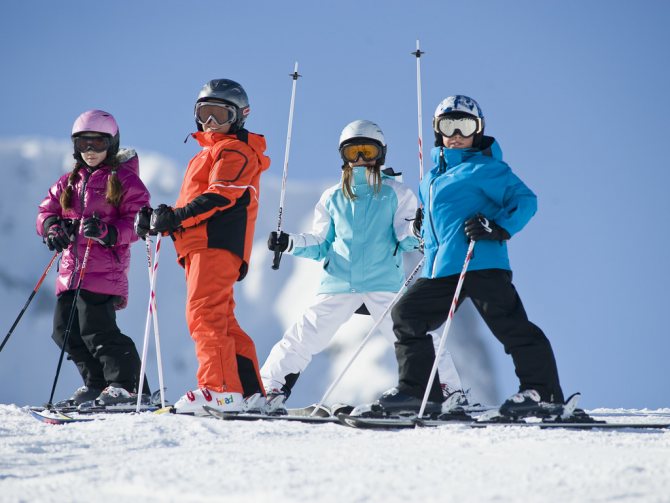
The advantages include constant mobility and excellent mood, which ensures good sleep and lack of stress.
You can’t argue with the benefits of winter sports, but you can’t call them safe either. Therefore, we must not forget about the existence of contraindications:
- disorders in the development of connective tissue
- problems related to the musculoskeletal system
- diseases of the cardiovascular and respiratory systems
- kidney diseases
- previous injuries
At what age can you engage in winter sports?
Here it is important to understand that to engage in such sports, the child must be physically ready, his musculoskeletal system is developed, his nervous system is stable, he already knows how to communicate in a team and listen to the instructions of the coach, etc. In many sports, the optimal age for starting classes is 6-7 years, although figure skating groups are recruited from the age of 4, but it is recommended to start playing hockey seriously at the age of 9.
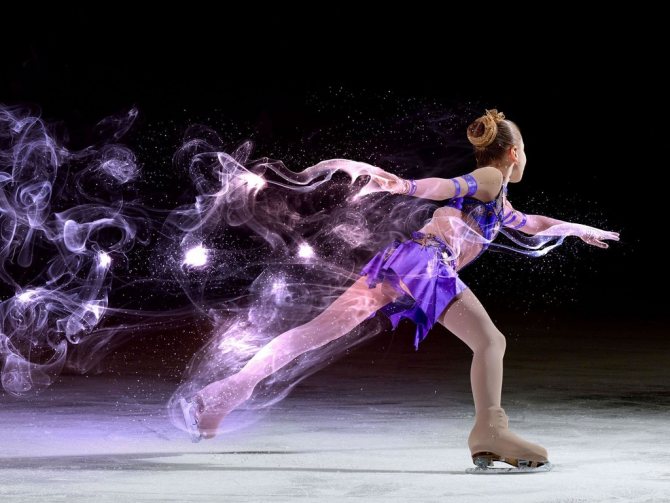
Luge
The first association from the name is children's winter fun, sledding down the mountain and these breathtaking sensations. But luge is not a joke and is far from entertainment. In other words, luge is a high-speed descent from a slope on a sled, which has its own subtypes: classic, natural and skeleton. Each subspecies has its own characteristics.
This sport is suitable for both boys and girls; you can enroll in the section from the age of 5, but it is better to start practicing professionally from the age of 10.
What do you need to know before taking your child to such a section? Firstly, correctly assess your child’s physical data; in order to control the sled, the body must be ready for regular training, you need to be able to control it. The second factor is that in luge the weight of the athlete along with equipment and equipment is taken into account.
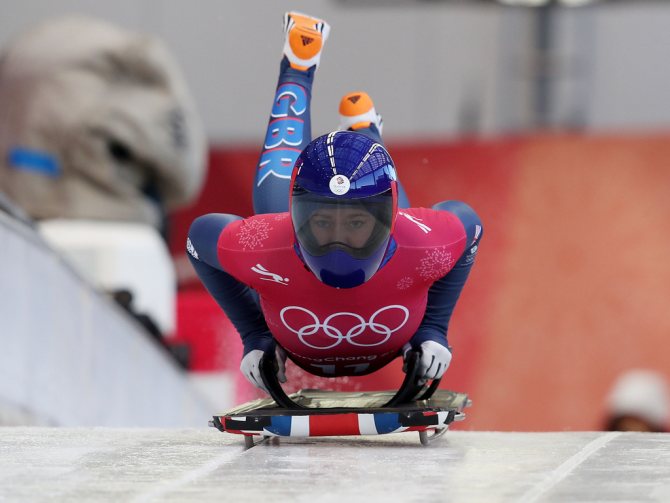
skiing
One of the most popular winter sports, loved by both adults and children. You can start training at the age of 5-6; at this age the main thing is to learn how to stand on skis and maintain balance.
What skiing gives is a positive effect on all muscle groups, develops qualities such as determination, self-confidence and motivation to move forward without leaving a difficult path.
The disadvantages of this sport include seasonality. The lack of snow becomes a problem for year-round activities. In this case, there are sports facilities with artificial conditions for training.
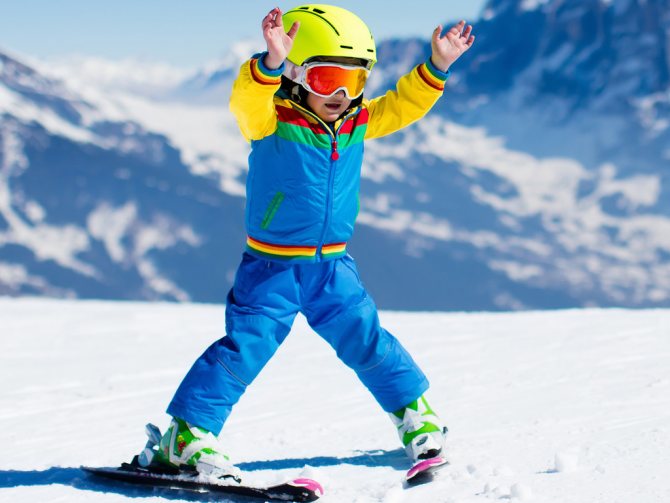
Snowboarding
Snowboarding is a favorite sport among young people. If your child is not indifferent to a skateboard, then he might like the idea of trying his hand at a snow slope. You can start conquering your first, albeit small, peaks from the age of 5.
Don't let the extreme nature of this sport scare you. Beginning snowboarders learn their first few years either on flat surfaces or on the smallest slopes. With the development of the necessary skills, there is a desire to improve them, courage and excitement in learning new tricks.
But parents must understand and be prepared for the fact that as your child grows and his skill level, the slopes will become steeper, the speed higher, and the tricks more difficult.
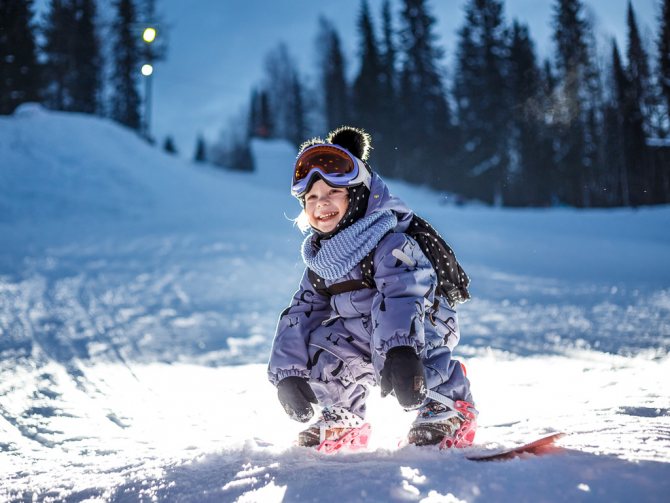
Hockey
Hockey lessons will teach your child many useful skills and even correct his character in some ways. He will not only learn to skate confidently and multitask, but also to feel like part of a team solving a common problem.
It is very important to learn to be a significant link in such a team. All these and many other skills can serve well in the further development of the individual.
You can start learning to skate at the age of 3-4 years, and by the age of 6-7 years he will begin to master the basics of the hockey game. Once upon a time, the game of hockey was played exclusively by “real men,” but the world is changing and today women’s hockey confidently takes its rightful place among winter sports. Therefore, there are also hockey sections for girls.
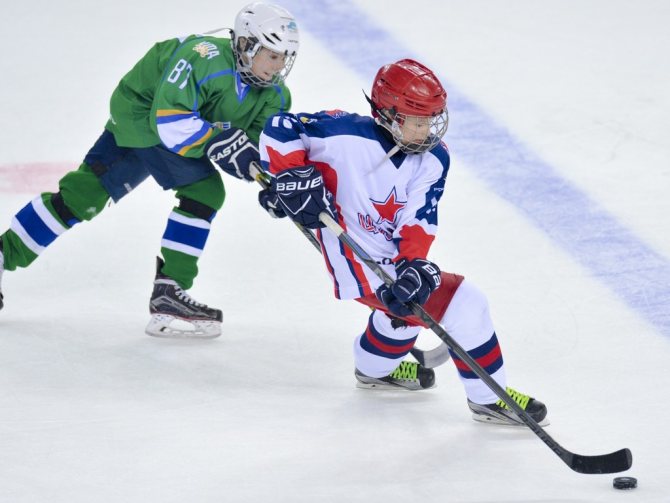
Skating
Ice skating can be a winter hobby, or it can lead to a big sport.
In any case, this is only beneficial for the growing body, because spending time at the skating rink is a panacea for all ailments. Ice skating has a beneficial effect on all body systems, forms correct posture, and smooth gliding on the ice calms you down and relieves stress.
Of course, ice is ice and you can’t do without falls, but that’s why you need an experienced coach nearby who will not only teach you how to skate, but also how to fall correctly so as not to get injured.
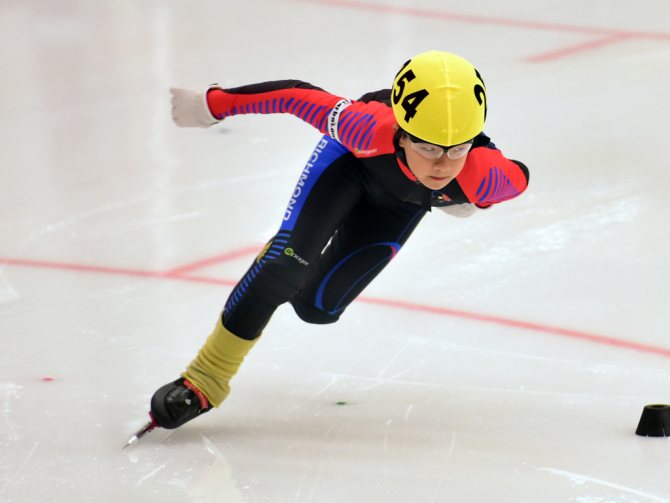
Figure skating
A beautiful, spectacular and very popular sport, attracting with its virtuosity and courage.
This sport attracts both girls and boys equally. Acquired skills: good coordination, ability to maintain posture, performing complex elements on ice will help you feel more confident in later life.
Like any sport, figure skating helps strengthen the athlete’s strong-willed qualities, forces him to grow up earlier, be able to set goals, and sometimes even prohibitions for himself.
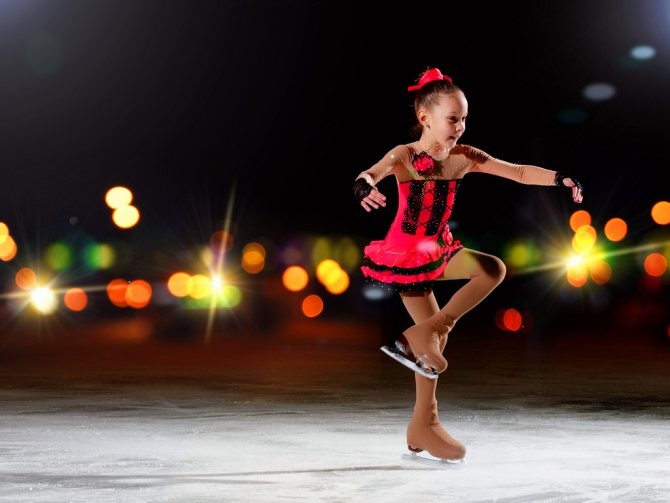
How to ensure your child's safety when playing sports in winter
- Clothing and equipment must be of high quality, providing protection against frostbite
- When choosing skates, we pay attention to quality, be sure to choose by size and age
- A good trainer is the key to your child’s safety.
- Be careful when choosing a slope at ski resorts; it should be free of obstacles and ice
- Avoid frozen bodies of water and any questionable icy surfaces
- Carry a first aid kit with anti-frostbite remedies, various ointments, and an elastic bandage.
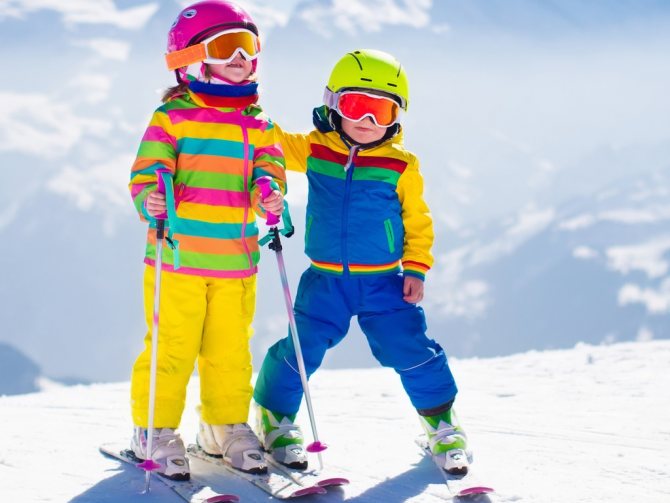
Winter sports are all interesting in their own way, so choose the one that your child likes. Only the path he has chosen can be followed, showing perseverance and overcoming all difficulties.
Snowboarding
Snowboarding, as an Olympic sport, is not inferior to alpine skiing in terms of popularity. Have you noticed your child's love for skateboarding? Then he will definitely like moving from dry asphalt to a snowy slope! You can start conquering your first, albeit small, peaks from the age of 5.
This sport is one of the most dangerous and extreme, so the first few years of training will take place on flat surfaces or on small slopes. Such systematic and leisurely exploration of snowy areas develops courage in the child and gives motivation to develop, honing his skills. Therefore, during this period, parents can remain calm, but not for long - after the first two years of training, not only your child will grow, but also the degree of risk: the slopes become steeper, the speed is higher, the tricks are more difficult.
Snowboarding for children: at what age and what are the benefits.
Hockey
There are many benefits to playing hockey, even if your child doesn't want to go all the way to the big leagues. And this is the ability to skate, work in multitasking mode, develop communication skills and being in a team.
Since during the first few years children learn to stand on the thin blades of skates, the preparatory stage can begin at 3-4 years old. By the age of 6-7 years, the child will begin to be taught the basics of hockey. It seems that such an intense game is an exclusively male sport, however, girls are in no way inferior in it. Women's hockey is gaining popularity not only in Russia, but throughout the world, and much attention is paid to the education of girls, whose game, perhaps, will bring gold to the country in the future. Like any team sport, hockey is not only about physical health, but also about character, which is strengthened in a team, where it is important to show leadership qualities, but also not to forget about mutual assistance.
Hockey for children: at what age and what are the benefits.
Figure skating
Figure skating is one of the most graceful sports. It seems that it was created exclusively for fragile girls in richly embroidered dresses, however, this is a misconception: who, if not a faithful partner, will help to do the difficult support in a pair performance?
The section is open to children of all ages, although the optimal category is 6-7 years old. It is important to understand that figure skating is a sport bordering on art, so an atmosphere of competition and a demanding coach will only contribute to the formation of strong-willed qualities and the desire to be first. Pleasant bonuses are improved coordination, which in the future will be required to perform fancy figures, as well as alignment of posture - even if the child does not become a professional figure skater, holding his back proudly will already become a habit.
Often the spirit of competition and failure lower self-esteem, contributing to the emergence of complexes. In addition, professional figure skating will speed up your growing up: there will be practically no free time, and you will have to completely forget the taste of sweets.
Figure skating for children: from what age and what are the benefits.
How to keep your child safe when playing sports in winter
Winter sports for a child are not only an opportunity to express themselves, but also a constant risk of injury or bruise. We remember that training takes place in sub-zero temperatures, so one of the most important factors is warmth. Rule No. 1 - we spare no expense on high-quality clothing and equipment - thus, we reduce the risk of frostbite to zero and ensure the normal course of metabolic processes in the body. Another thing that you should not spare money on is skates. They should be selected by age and, most importantly, by size.
If your child is just taking his first steps in winter sports, choose a good coach for him - this will make the process go faster and avoid any troubles. At ski resorts, be careful when choosing a slope: there should not be a large number of obstacles and ice. Avoid frozen bodies of water and any questionable icy surfaces. The child must learn that they can only ride in specially designated areas. And most importantly, don’t forget to talk to your children, explaining to them what is “good” and what is “bad”!
How to keep your child safe
When sending their child to a winter sports section, parents think about his health. After all, training takes place in sub-zero temperatures, the baby can freeze, fall, hit and get hurt.
Warm clothes
The child should always be warm, but this does not mean that he needs to be wrapped in many layers of clothing. Being in constant motion, the baby sweats, unbuttons his jacket and quickly catches a cold. You need to dress according to the weather. This reduces the risk of getting sick or getting frostbite.
High-quality equipment
Don't skimp on safety equipment. It’s better to buy high-quality and comfortable equipment that will last a long time than to risk your child’s health. Skates, skis, sleds should be selected according to age and size so that the child can use them comfortably.
Good coach
At first, you need to hire an experienced trainer. He forms the child’s idea of sports, is responsible for safety, is always nearby and helps the child. Hiring a teacher individually or sending your child to a section is your choice. But do not forget, the child must be in society, contact with peers, make friends in order to be sociable and social. And the circle is ideal for combining the acquisition of new knowledge and skills with the process of socialization and entertainment.
Safe places to study
Be careful and attentive when choosing a route for winter sports training. There should not be many obstacles: frozen blocks, stones, branches, ice - anything that could prevent the child from successfully riding. Do not let children onto frozen bodies of water - even seemingly solid ice can be dangerous. Explain to your child that he can only ride on specially designated areas. You should not experiment on dubious slopes - this can lead to dire consequences.
So, winter should not be an obstacle to playing sports! Skis, sleds, snowboards, skates - it's fun and useful. The mission of parents is to interest the child in trying this or that sport. When your child gets the hang of it, you don’t need to worry yourself about every bruise on your knee. This will teach the baby to be stronger and overcome obstacles, which is very important in everyday life. When choosing a winter sport, do not put pressure on your child; he should show interest on his own. If your child doesn’t like skating, you shouldn’t force him to go figure skating, but rather offer to try skiing or snowboarding. After all, a child’s personality and worldview should be formed through their own trial and error, and not through parental whim and direction.
Tips for parents
- To attract a child to winter sports, you should start from afar, for example, by watching movies and competitions together.
- When leaving your comfort zone, do not torment yourself with worries. Accept the fact that at first you cannot do without falls. Who promised that it would be easy?
- Your arsenal should always include anti-frostbite remedies, various ointments, and an elastic bandage.
- Do not put pressure on the child - his choice should be conscious. His personality should be formed by trial and error, and not by parental whim.
Skating
Parents with small children are advised to tell their children in advance about what winter is, and also to explore winter sports with them - skating and skiing. You can use pictures or clippings from children's magazines to help.
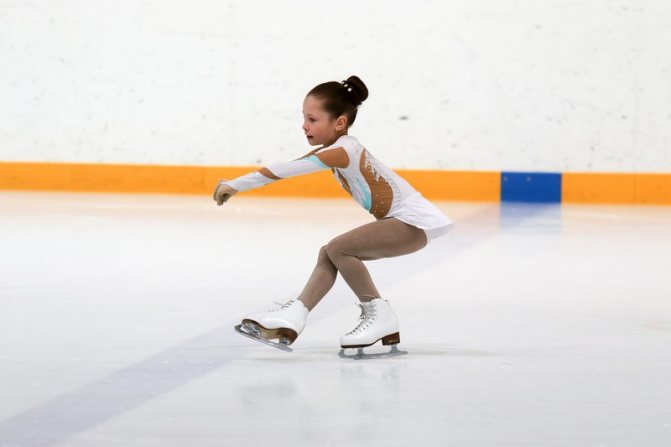
The amount of time needed to learn how to skate on ice depends on the age of the child: the earlier he starts skating, the faster he will master the skating technique. Those mothers and fathers who themselves know how to stay on the ice can engage in training.
